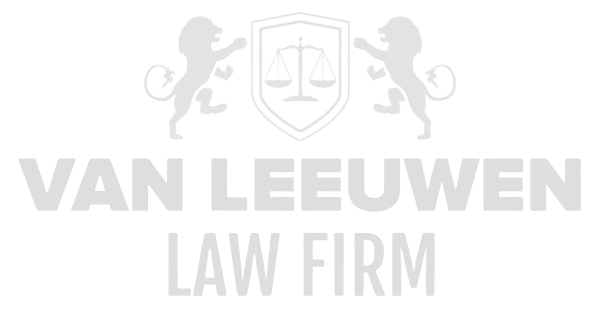Blockchain technology represents a paradigm shift in digital record-keeping by establishing a decentralized ledger that records transactions across a distributed network of nodes. Each block in the chain contains a cryptographic hash of the previous block, a timestamp, and transaction data. Once validated through consensus mechanisms—such as Proof of Work or Proof of Stake—a block becomes immutable, ensuring that past records cannot be tampered with or altered. Originating as the foundational architecture for cryptocurrencies like Bitcoin and Ethereum, blockchain has evolved into a versatile solution for enhancing transparency, security, and traceability in diverse industries. Applications now span supply-chain provenance, electronic voting, digital identity frameworks, and smart contracts that self-execute upon predefined conditions. Despite its decentralized promise, blockchain implementations must still adhere to stringent data protection regimes—such as the European Union’s General Data Protection Regulation (GDPR)—when personal information is processed, and must guard against allegations of (a) financial mismanagement, (b) fraud, (c) bribery, (d) money laundering, (e) corruption, or (f) violations of international sanctions that can imperil both operational integrity and stakeholder trust.
Financial Mismanagement
Financial mismanagement in blockchain ventures often arises from inadequate budgeting for network maintenance, misallocation of funds during token launches, or failure to reserve sufficient capital for ongoing development and security audits. Underestimating the costs associated with node operation—such as electricity consumption and hardware depreciation—can lead to unsustainable network economics. Misclassifying token-sale proceeds as revenue rather than liabilities earmarked for platform development and ecosystem incentives distorts financial statements and misleads investors about project viability. Directors and supervisory boards bear fiduciary responsibilities to implement transparent financial controls, including milestone-based fund disbursement, periodic variance analyses comparing realized versus forecasted expenses, and independent audits of treasury management. Inadequate governance in these areas may necessitate restatement of financial results, trigger compliance inquiries by securities regulators, and erode confidence among token holders and institutional backers.
Fraud
Fraud within blockchain ecosystems can manifest in the form of deliberately manipulated smart contracts, fabricated transaction histories, or deceptive tokenomics designed to conceal insider siphoning of funds. Perpetrators may exploit flaws in code to trigger unauthorized asset transfers, deploy counterfeit nodes that feed false data into consensus algorithms, or orchestrate pump-and-dump schemes by artificially inflating token prices. Detection requires comprehensive forensic analysis of on-chain transactions, review of smart-contract source code, and validation of node integrity across the network. Upon confirmation of fraudulent conduct, legal remedies can include contract rescission, clawback of ill-gotten distributions, and civil claims for damages. Regulatory authorities may pursue criminal sanctions if evidence reveals intentional deception affecting broad investor populations, leading to injunctions, asset freezes, and disqualification orders against culpable individuals.
Bribery
Bribery risks in blockchain initiatives emerge when stakeholders offer improper incentives—such as token allocations, off-ledger asset transfers, or equity stakes—to influence decision-making within decentralized autonomous organizations (DAOs) or to secure preferential treatment from node validators. Such practices violate anti-corruption statutes like the U.S. Foreign Corrupt Practices Act and the UK Bribery Act when dealings cross national borders or involve corporate entities. Effective mitigation requires the establishment of transparent governance protocols within DAOs, mandatory conflict-of-interest disclosures by core contributors, and audit trails for all token distributions. Absence of these safeguards can result in crippling fines, reputational damage to foundational teams, and debarment from participation in regulated financial markets.
Money Laundering
Blockchain’s pseudonymous nature can be abused to launder illicit proceeds through mixing services, rapid layering of transactions, or conversion between cryptocurrencies and fiat via unregulated exchanges. Criminal networks may obscure asset origins by shuffling funds across multiple wallets or employing decentralized finance (DeFi) platforms to camouflage illicit flows. Robust anti–money-laundering (AML) frameworks necessitate rigorous Know-Your-Customer (KYC) and Know-Your-Transaction (KYT) protocols for on-ramps and off-ramps, real-time blockchain analytics to detect anomalous transfer patterns, and coordination with financial intelligence units. Smart contracts governing token swaps should incorporate automated sanction-screening checks. Failure to enforce AML controls invites enforcement actions—including hefty fines, license revocations for custodial services, and criminal prosecutions of platform operators—while undermining relationships with compliant banking partners.
Corruption
Corruption in blockchain contexts can take the form of nepotistic grant of development contracts, collusive arrangements among validator pools to manipulate governance votes, or diversion of public-sector blockchain grants to entities controlled by insiders. Such abuses distort competition, betray public trust in distributed governance, and violate integrity covenants embedded in grant and partnership agreements. Detection often involves on-chain analysis of voting records, scrutiny of developer-fund distributions, and forensic examination of communications between core team members and external stakeholders. Preventative mechanisms include deployment of transparent upgrade processes with multisignature approval, rotation of governance committee members, and secure whistleblower channels for reporting misconduct. Allegations of corruption can lead to suspension of development grants, disqualification of validators, and legal injunctions to freeze suspect accounts.
Violations of International Sanctions
Blockchain projects must navigate a complex web of economic sanctions and export controls enforced by bodies such as the United Nations, European Union, and the U.S. Office of Foreign Assets Control (OFAC). Violations occur when transactions are processed for sanctioned entities, when blockchain-based wallets serve embargoed jurisdictions, or when underlying cryptographic tools are transferred contrary to dual-use export restrictions. Compliance frameworks should integrate automated screening of wallet addresses against updated sanctions lists, geofencing to block access from prohibited regions, and legal vetting of cross-border token distributions. Detailed on-chain records—capturing address metadata, transaction timestamps, and smart-contract interactions—serve as essential evidence of due diligence. Infractions may attract substantial civil penalties, freezing of blockchain network operations, and criminal charges against responsible officers, while necessitating immediate suspension of affected projects and extensive remediation to restore lawful compliance.












